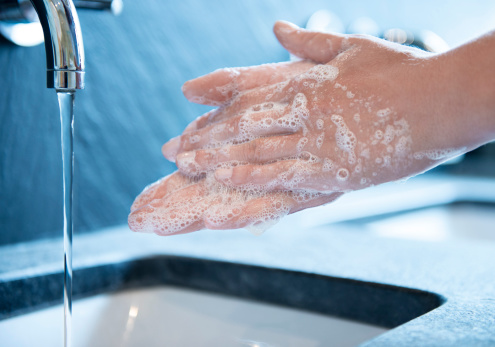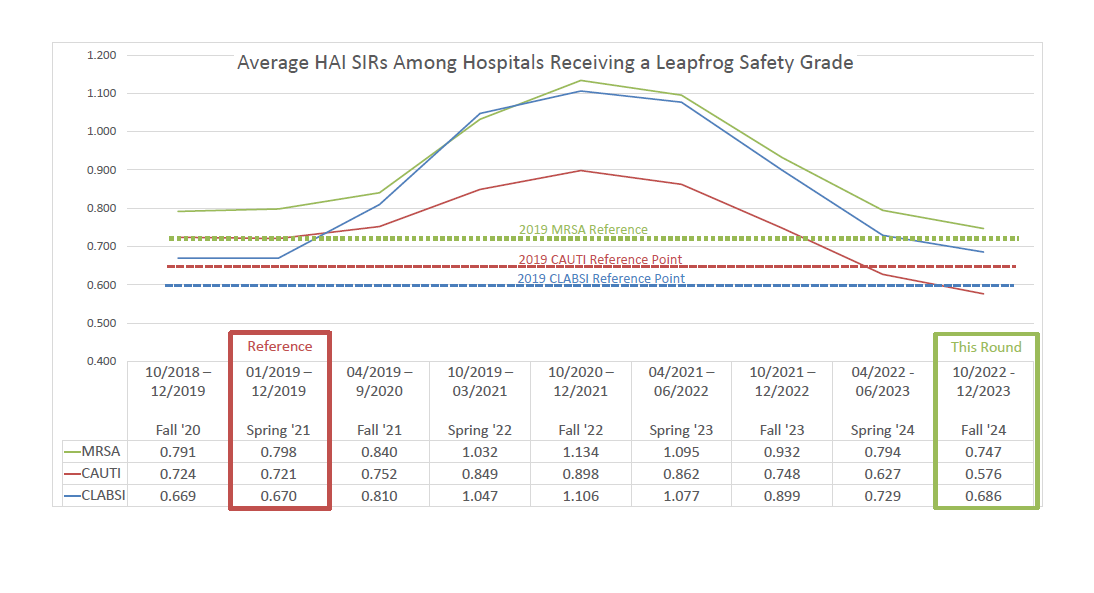
This week is Infection Prevention Week, a time to reflect on the significant strides made in reducing healthcare-associated infections (HAIs). In particular, the downward trends in Central Line-Associated Bloodstream Infections (CLABSIs), Catheter-Associated Urinary Tract Infections (CAUTIs) and Methicillin-Resistant Staphylococcus Aureus (MRSA) infections highlight the collective efforts of health care professionals, institutions, purchasers and patients to put patient safety first.
This chart illustrates that these three HAIs – MRSA, CAUTI and CLABSI – have continued to decrease since they peaked during the COVID-19 Pandemic.
CLABSI
CLABSI has seen a notable decline since it spiked during the COVID-19 Pandemic. This drop can be attributed to enhanced training for health care staff, better insertion techniques and stringent maintenance protocols.
CAUTI
Similar progress has been observed with CAUTI. Research indicates that through the implementation of evidence-based practices, such as proper catheter insertion and maintenance, hospitals have successfully reduced CAUTI rates. This progress highlights the importance of continuous education and adherence to guidelines.
MRSA
The decline of MRSA infections is likely due to enhanced diagnostic tools, effective isolation measures and improved hand hygiene. Rigorous screening upon admission allows for early identification of carriers, while antibiotic stewardship reduces overuse of antibiotics. Public awareness campaigns and ongoing research into new treatments have also strengthened efforts against MRSA, leading to better public health outcomes.
A Key Way to Reduce HAIs: Hand Hygiene
A critical way to reduce the spread of certain HAIs is proper hand hygiene. Leapfrog recently released a report that found the percentage of hospitals achieving Leapfrog’s Hand Hygiene Standard increased almost sevenfold since 2020, with leaders’ compensation increasingly tied to gains and adoption of key technology doubling. Read the full report here. There is still work to be done to improve hand hygiene practices in hospitals and in all health care settings.
Why This Matters
The reduction in these infections not only improves patient outcomes but also enhances the overall patient experience. Each decrease in infection rates translates to fewer complications, shorter hospital stays and lower health care costs, ultimately benefiting patients, purchasers, payors and providers alike.
Moving Forward
While we celebrate these achievements, it’s vital to remain vigilant. Infection prevention is an ongoing commitment. Health care facilities must continue to invest in education, resources and technology to sustain these positive trends and address emerging challenges.
During Infection Prevention Week, let’s take a moment to acknowledge the hard work of health care professionals dedicated to safeguarding patient safety. Together, we can continue to build on our successes and strive for a future where HAIs are significantly minimized.

